Ride a Peloton After Knee Replacement Surgery
Table of Contents
- When can I return to riding my Peloton bike at home after a total knee replacement?
- Is a Peloton bike good physical therapy after a total knee replacement surgery?
- Will riding my Peloton too much wear out my new knee?
- How often should I ride my Peloton bike after knee replacement surgery?
- What else can I do to improve my ability to ride my Peloton bike after knee surgery?
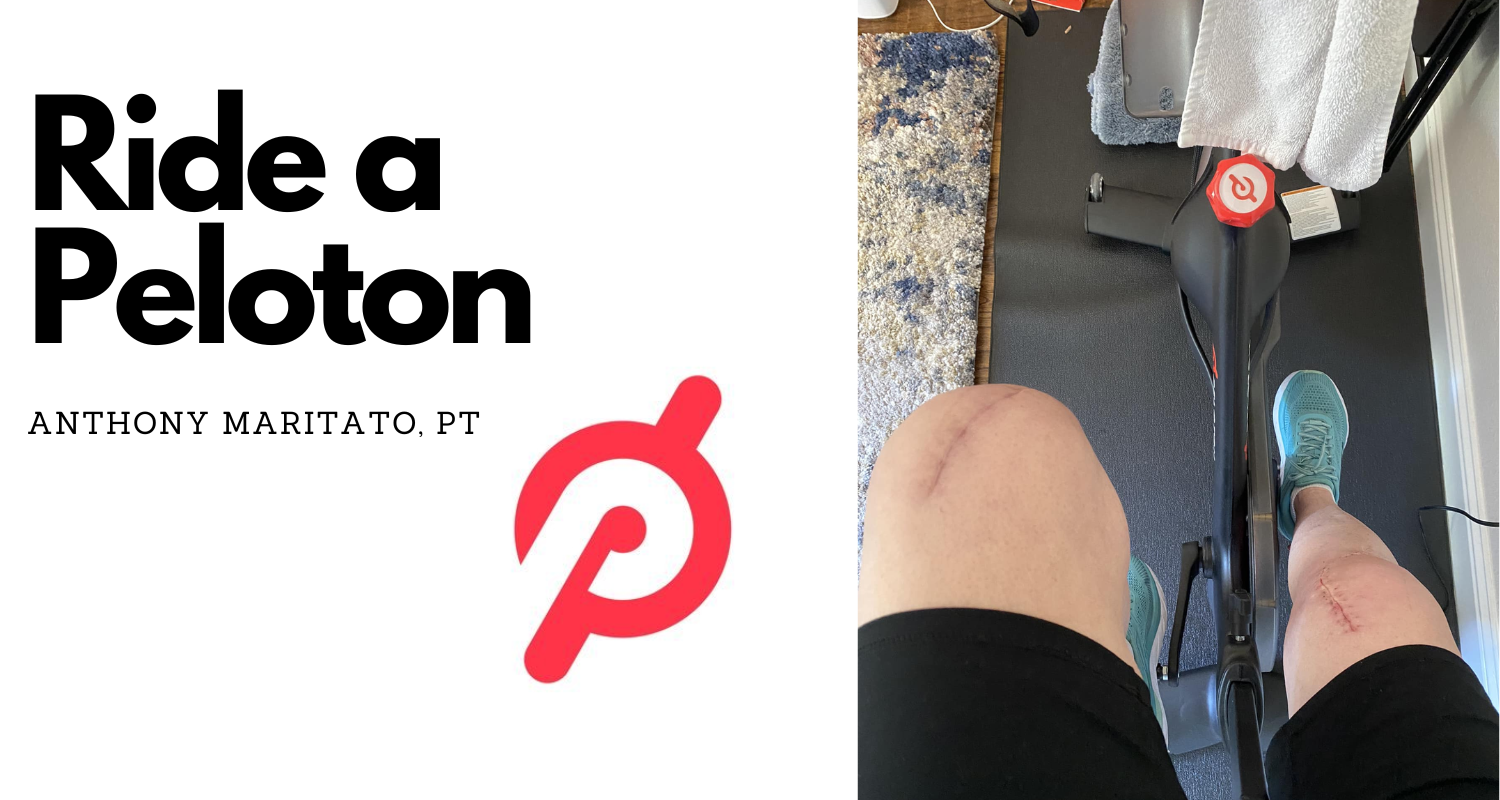
When can I return to riding my Peloton bike at home after a total knee replacement?
As a licensed physical therapist, I often encounter this question from patients who have recently undergone a total knee replacement surgery. The key to a successful return to Peloton riding, or any exercise for that matter, lies in understanding your body’s recovery timeline and taking a phased approach. Here is a general guideline that you can follow:
Day of Surgery to Day 10 after surgery
During this initial phase, it’s important to prioritize safety. You shouldn’t start riding a Peloton until you can safely get on and off the bike without assistance or discomfort. This phase focuses on rest, recovery, and gentle mobilization exercises as advised by your physical therapist.
Day 11 to Day 28
This phase is all about introducing short, gentle sessions on the Peloton. You can start with up to 3 sessions a day, each lasting just a few minutes. Many patients begin with 3 minutes of pedal rocks per session. Once a full pedal revolution is comfortable, you may increase this to 5-minute episodes three times a day. Remember, the aim is not to exhaust the muscles but to gradually increase their workload. Keep the intensity at 50% of maximum effort during these first 4 weeks.
Day 29 to Day 42
If you can perform a full revolution without fatigue after multiple 5-minute sessions, it’s time to increase the speed and duration of each cycling session. This helps build your endurance and further strengthens the muscles around your new knee joint.
Week 7 – 10
At this stage, you can start to increase the resistance and intensity of each cycling session. With the fantastic range of classes offered by Peloton, you can start participating in the ones that suit your pace and comfort level. These classes are designed to cater to different stages of your recovery and help enhance your overall cycling experience.
Week 11-12
Now is a great time to test your abilities. Push your limits by increasing the duration and intensity of your workouts, but be sure to reduce the frequency to give your body ample rest and recovery time. Listening to your body and respecting its signals is vital at this stage to avoid overdoing it and risking injury.
Remember, this is a general timeline and individual recovery rates may vary. Always consult your physical therapist or healthcare provider before starting or modifying any exercise regimen after surgery.
Will riding my Peloton too much wear out my new knee?
It’s natural to be concerned about the longevity of your new knee joint after a total knee replacement surgery. One of the questions that might be on your mind is whether riding your Peloton bike excessively can wear out your new knee. Here’s what you need to know.
Low-impact activities like cycling are generally good for your new knee. They help improve mobility, strengthen the muscles around the joint, and contribute to your overall health. Riding a Peloton, an exercise bike, or an e-bike is a great way to exercise without putting undue stress on your new knee joint. However, like all good things, moderation is key.
Overuse or too much of high-intensity cycling could potentially lead to strain and discomfort. It’s essential to follow a balanced and controlled exercise regimen that is advised by your physical therapist or healthcare provider. To learn how to properly use a stationary bike after a total knee replacement, you can refer to our detailed guide here.
Now, when it comes to wearing out your knee replacement, high-impact activities are more likely culprits. Examples include running, jumping, or any activity that involves sudden or forceful movements. While these activities can be beneficial for fitness in certain contexts, they may put a lot of stress on your new knee joint and potentially hasten its wear and tear. Overcoming challenges after a total knee replacement often involves understanding what activities to avoid and finding lower impact alternatives, like cycling or using an elliptical trainer.
So, while riding your Peloton is a fantastic way to stay fit and strengthen your knee after surgery, it’s important to listen to your body. Incorporate variety in your routine with different forms of low-impact exercises, such as flexion exercises, and give your body ample rest. If you have any doubts or concerns, always consult with your healthcare provider or physical therapist.
How often should I ride my Peloton bike after knee replacement surgery?
As your recovery progresses, it’s important to establish a routine that gradually increases your exercise load to help build strength, flexibility, and endurance. The frequency, intensity, and duration of your Peloton rides should be carefully calibrated to match your healing progress. The following table provides basic exercise prescription guidelines after knee replacement surgery:
| Weeks Post-Surgery | Frequency | Duration | Intensity | Resistance |
|---|---|---|---|---|
| 2-4 Weeks | 2-3 times a day | 5-10 minutes per session | 50% of maximum effort | Low |
| 5-6 Weeks | 1-2 times a day | 10-20 minutes per session | 50-60% of maximum effort | Low to Moderate |
| 7-10 Weeks | Once a day | 20-30 minutes per session | 60-70% of maximum effort | Moderate |
| 11-12 Weeks | Every other day | 30-45 minutes per session | 70-80% of maximum effort | Moderate to High |
Please remember, these guidelines are general in nature and individual progression may vary based on your surgical outcome, age, physical fitness, and overall health. Always listen to your body and consult with your physical therapist or healthcare provider before making any significant changes to your exercise regimen.

What else can I do to improve my ability to ride my Peloton bike after knee surgery?
Rehabilitating your knee and getting back to your Peloton routine involves more than just exercise. Implementing a comprehensive recovery strategy that includes optimal nutrition, adequate rest, appropriate medication use, and various recovery strategies is key. Below are some suggestions:
Nutrition
Eating a balanced diet is crucial to fuel your body for recovery. Consuming sufficient protein is particularly important for muscle repair and growth. Foods rich in omega-3 fatty acids, such as fatty fish and flaxseeds, can help reduce inflammation. Drinking plenty of water also helps keep your joints lubricated and facilitates the healing process.
Rest
Your body heals and recovers during rest. Make sure you’re getting enough sleep each night and taking rest days between workouts. Your muscles grow and repair themselves during these periods. Resting is just as important as exercising in your recovery journey.
Medication
If you’re experiencing pain, over-the-counter pain relievers can be used. However, it’s important to consult your healthcare provider before starting any new medication. For more on this topic, check out this article on overcoming challenges after total knee replacement.
Recovery Strategies
Applying ice to your knee after exercising can help reduce inflammation and alleviate pain. Additionally, incorporating flexibility and stretching exercises into your routine can enhance joint mobility. You might also consider massage or physiotherapy for pain relief and to improve joint function.
Using a pedal exerciser in conjunction with your Peloton bike could be a beneficial strategy, allowing for lower intensity exercise and increased mobility. Moreover, exploring other low-impact exercise options such as using an elliptical trainer can help diversify your exercise regimen and work different muscle groups for a balanced recovery.
Remember, your journey to recovery is unique. It’s crucial to listen to your body and consult with your healthcare provider to develop a plan that’s best for you.
Article Roundup
| Key Takeaways |
|---|
| 1. You can gradually return to riding your Peloton bike after a total knee replacement, starting with small episodes and gradually increasing duration, speed, and intensity over time. |
| 2. Despite concerns, riding your Peloton will not wear out your new knee if you adhere to your recommended recovery plan. Avoid high-impact activities to ensure your knee replacement lasts. |
| 3. To recover optimally and return to Peloton riding, adhere to a balanced exercise routine that gradually increases in frequency, intensity, and resistance. |
| 4. Support your exercise routine with a balanced diet, adequate rest, appropriate medication use, and various recovery strategies such as icing and massage. |
| 5. Every recovery journey is unique. Listen to your body, consult your healthcare provider, and adapt your plan as needed. |

Anthony Maritato, PT
Physical Therapist
Anthony Maritato, PT has been a licensed physical therapist and private practice owner since 2006. Ohio license #PT011602.
Anthony has been passionate about helping patients recover from total knee replacement surgery as well as rotator cuff repair surgery.

Total Knee Replacement Pre Surgery Online Class
This total knee replacement class is 100% online, and totally FREE. In this three part class you will learn what to do 6-weeks before your surgery, the day of surgery, and 12-weeks after surgery.* Class Dates To Be AnnouncedFREE Online Knee Replacement Pre-Surgical...
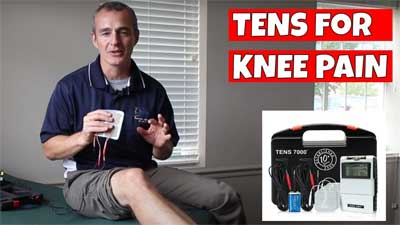
Can you use a TENS unit after knee replacement?
TENS is a safe and effective way to reduce pain after a total knee replacement. Transcutaneous Electrical Nerve Stimulation also known as TENS offers a way to reduce pain without medication. TENS may be used during knee range of motion exercises as well as while icing...

How To Stretch A Stiff Knee After Knee Replacement
Is it Safe to Stretch a Stiff Knee It is important to understand what may be causing knee stiffness before stretching the knee. After total knee replacement, the most common cause of knee stiffness includes edema, scar tissue formation, and reflexive guarding due to...

Knee Replacement Bending Flexion Exercises at Home
Knee bending exercises, also called knee flexion, may be performed at home immediately following knee replacement surgery. Heel slides are the most common form of knee flexion exercise. In this video, you will learn more advanced knee flexion exercises to perform at...

Can I Run After Knee Replacement
Conventional advice is to avoid high impact activities after a total knee replacement. This would include running, jogging, and other high impact sports. The concern is the increased wear and tear on the new knee will cause it to wear out sooner or possibly even...
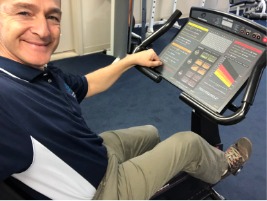
How soon after knee replacement can I use exercise bike?
You can start using an exercise bike within the first 48-hours following a knee replacement surgery. Standard practice in many physical therapy clinics is to begin using a recumbent bike with a gentle rocking motion until the knee is capable of a completing full...
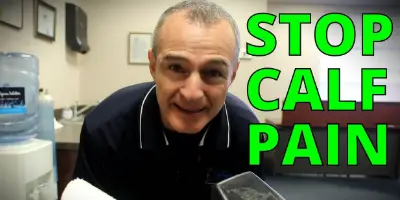
Calf Pain After Knee Replacement
Calf and thigh pain is common after a total knee replacement. Calf pain may be caused by sore muscles due to increased swelling, altered walking mechanics, limited range of motion, and performing new exercises like ankle pumps and heel slides.Tight Calf Muscles After...

Minimalist Running Shoe Review Unboxing Merrell Men’s Trail Glove 4 Runner
Minimalist Running Shoe Review Unboxing - Merrell Men's Trail Glove 4 Runner The Merrell Men's Trail Glove 4 Runner has been a great show. I am updating this description today January 1, 2020. I have worn the shoe for work in the clinic as a physical therapist as well...
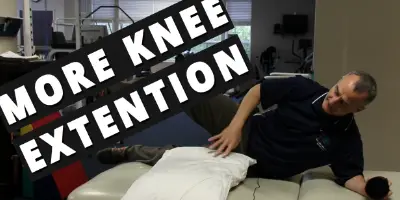
Best Tip To Improve Knee Extension- Prone Hangs
Best Tip To Improve [Knee Extension] After A Total Knee Replacement - Prone Hangs - PT at home 2020Swelling, pain, and other factors may contribute to limited range of motion in both extension and flexion. The most effective way to improve knee extesion is to perform...
